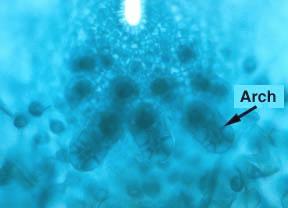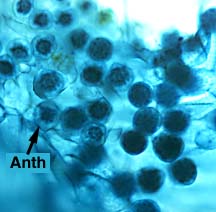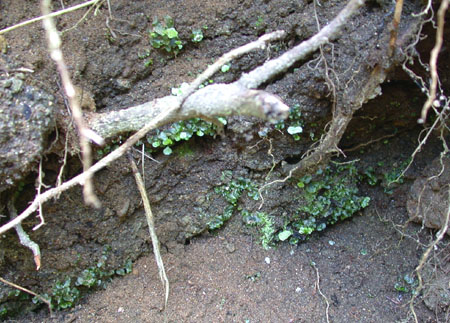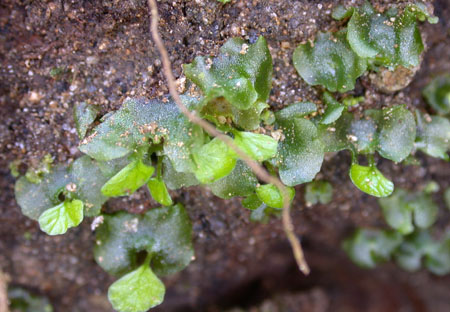FERN GAMETOPHYTE
The spores germinate to form gametophytes (prothalli). The prothalli are very tiny but distinctly heart shaped, with a notch at the apex and rhizoids near the base. They are also green, meaning that they are photosynthetic and can produce their own energy. (Note: The blue color in these photos is caused by the stain toluidine blue.) The rhizoids cannot uptake nutrients from the soil, but rather play an important role as anchorage structures.
The archegonia (female bits) are found close to the notch of the prothallus, as shown in the closeup on the left. They are flask shaped structures and each archegonium houses a single egg. The antheridia (male bits) are found at the base of the prothallus amongst the rhizoids (right). Each antheridium produces many sperm cells, which are flagellated and swim to the archegonium guided by chemical attractants exuded by the latter. Note that water must still be present for fertilization to take place. The zygote develops into the sporophyte, which remains attached to the gametophyte for a short time (as seen below).
Here are two young sporophytes (Spor) which develop into the “ferns” you see in the forest. You can see the gametophyte (Gam) still attached at the base of the fronds. Haploid spores are produced on the fern sporophyte by meiosis and eventually germinate into new gametophytes, completing the life cycle.
Where do you find fern gametophytes in the wild? Recently exposed soil such as overturned tree roots, which are in shady wet spots, are good places to look.
Here you can see some fern gametophyte. A young sporophyte is growing from one (indicated with a white arrow).
A few more gametophytes with a few more young sporophytes.
SPOROPHYTE
FRONDS
RHIZOME
SPORANGIA
GAMETOPHYTE







